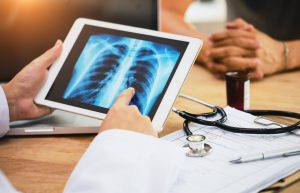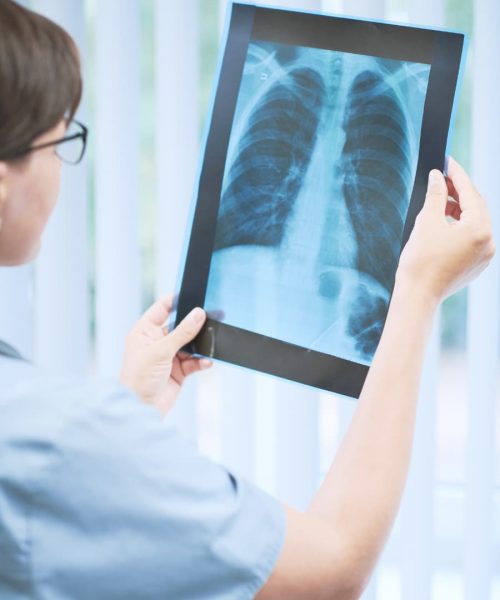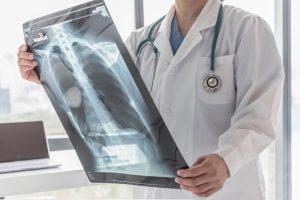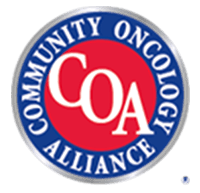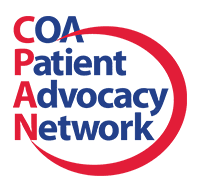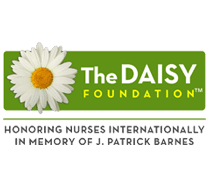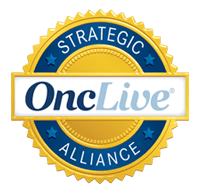Symptoms and Screening
Dr. Fitzgerald says the lung cancer death toll is driven in part by the fact that people often do not have symptoms in the early stages of the disease, and are not diagnosed until their cancer has advanced and become more difficult to treat successfully.
“Symptoms usually occur only when a tumor is of significant size, when it has become large enough to press on something. There’s a lot of reserve in our lungs, so when the tumor is growing in the middle of the lung, it won’t be pressing on anything and won’t cause symptoms,” he notes.
The cancer specialist urges people to see their doctor if a cough doesn’t go away. “They should at least get a chest X-ray if a cough is lasts more than three or four weeks and there’s no obvious cause,” he says.
Beyond persistent cough, other symptoms of lung cancer can include:
- shortness of breath
- chest pain
- hoarseness
- recurrent pneumonia or bronchitis
- coughing up blood
Dr. Fitzgerald emphasizes that many of the symptoms of lung cancer can also be signs of other conditions, ranging from the annoying but non-life-threatening, such as a post-nasal drip that triggers a chronic cough, to the non-cancerous but still serious, such as asthma with shortness of breath or heart disease with chest pain. “Symptoms such as these are not cause for panic, but they are reason to see a physician without delay. Too often, people ignore or minimize symptoms, or defer going to the doctor out of fear. In most cases, seeing a physician promptly will help you avoid needless anxiety by providing reassurance that the symptom does not represent anything serious. And in those cases where evaluation does identify a significant health issue, acting sooner rather than later can make all the difference in successfully treating the condition,” the cancer specialist notes.
If you are a current or former smoker, it’s also important to have regular screening for lung cancer since early detection before symptoms appear can improve treatment outcomes. The U.S. Preventive Services Task Force (USPSTF), a federal advisory panel of medical experts, recommends that smokers and ex-smokers undergo annual low-dose computed tomography (CT) scans to look for changes in the lungs.
The USPSTF guidelines say that a person should be screened each year if he or she is between 50 and 80 years old, has a smoking history of 20 pack years or more, and either smokes now or has quit within the past 15 years. (A pack year is defined as smoking an average of one pack of cigarettes a day for one year—for example, smoking one pack a day for 20 years or two packs a day for 10 years.)
Studies have presented strong evidence that regular CT scans lead to earlier detection of lung cancer, says Frederick Smith, MD, a board-certified medical oncologist who practices with RCCA in Chevy Chase, MD. He adds, “There was a higher cure rate in the screened population than in the non-screened population.”
Two Main Types of Lung Cancer
About 85% to 90% of people with lung cancer have a type of the disease called non-small cell lung cancer (NSCLC).
Smoking causes about 90% of NSCLC. Exposure to secondhand smoke, air pollution, radiation, and other toxic chemicals and substances such as radon, asbestos, chromium, and arsenic, cause most of the remaining 10%. A damaged gene can also contribute to NSCLC. By contrast, SCLC (small cell lung cancer) occurs almost exclusively in smokers. It is a much more aggressive disease than NSCLC that develops and is treated differently than NSCLC.
NSCLC has three main subtypes, each distinguished by the type of cell in the lungs that the cancer strikes:
- Adenocarcinoma is the most common type of NSCLC. It forms in the cells of the alveoli, which are tiny air sacs where the exchange of oxygen and carbon dioxide occurs. Nonsmokers and younger people are more likely to develop adenocarcinoma than other lung cancers. It also affects women more often than men.
- Squamous cell carcinoma originates in the lining of the lungs near one of the large air passages, or bronchi, that lead from the windpipe to the lungs. It’s the most common type of NSCLC in smokers, which likely explains why the number of squamous cell carcinoma cases has been steadily declining in recent years as fewer people smoke.
- Large cell carcinoma is a fast-growing cancer that can form anywhere in the lungs. Because it spreads, or metastasizes, quickly, it’s typically more difficult to treat than other types of NSCLC. It gets its name from the large, polygonal shape of its cells.
The chances of surviving NSCLC for at least five years after it is detected vary depending on the extent of disease at diagnosis. The average five-year survival rate is 25%, according to the NCI’s Surveillance, Epidemiology and End Results (SEER) program. If the cancer is found early, before it has spread, the five-year survival rate is 63%. Cancer that has spread outside the lungs to a nearby structure or lymph node has a 35% five-year survival rate. The survival rate for lung cancer that has spread to a distant organ, such as the brains, bones, or liver, drops to 7%.
Small-cell lung cancer grows and spreads quickly—it will already have metastasized in nearly 70% of people by the time they are diagnosed, according to the American Cancer Society. As a result, the prognosis for those with SCLC usually is poor. Even if SCLC initially responds well to treatment, the cancer eventually returns in most patients.
Overall, the SEER five-year survival rate is 7%. If the cancer is found early, before it spreads, that survival rate is 27%. If the cancer has spread to a nearby structure or lymph node, the five-year survival rate is 16%. Among those in whom the cancer has spread to a distant organ, that rate is only 3%.
Treatment Advances and Improved Outcomes
The treatment strategy for a patient’s lung cancer is determined by several factors, including the type and stage of the cancer and the patient’s overall health. Over the past decade, as new treatments such as immunotherapy and targeted therapy have been introduced, the number of deaths from lung cancer, especially the non-small cell type, has dropped significantly. Both therapies, as well as other types, are available at RCCA as first-line treatments.
“In patients who have lung cancer that has spread throughout the body, there is clearly a marked improvement in how long a person can live and even in overall survival” thanks to the availability of interventions such as immunotherapy and targeted therapy, says Seth Berk, MD, a board-certified oncologist who practices with RCCA in Moorestown, NJ.
Targeted therapy, Dr. Berk adds, has helped doctors take a highly individualized approach to patients’ lung cancer. “Some patients have forms of lung cancer with certain genetic profiles that enable those people to benefit from molecular therapies unique to their particular cancer.” Targeted therapy is beneficial for people who have an abnormal gene, or a gene mutation, that causes cancer cells to grow and spread. The therapy uses drugs or other agents to prevent those cells from reproducing, and it’s not as harsh as chemotherapy.
When lung cancer is discovered early—before it has had a chance to spread beyond nearby lymph nodes—all or part of the lung often can be surgically removed. However, undergoing surgery may not be viable for some patients who have additional medical conditions, such as chronic obstructive pulmonary disease. Dr. Berk credits newer treatment options for improving outcomes in such patients. One example is stereotactic body radiotherapy (SBRT), which destroys cancer cells or prevents them from growing. “SBRT is a sort of radiosurgery that delivers high doses of radiation to a very small defined area in patients not healthy enough to undergo surgery,” Dr. Berk explains. “The long-term outcomes with SBRT are very similar to those for surgeries that remove a portion of the lung. So, it’s slowly becoming a new standard for people whose health doesn’t permit an operation.”
Dr. Fitzgerald also points to the growing use of robotic surgery over the last 10 years. “Robotic surgery allows for very small incisions to be made in the lung. The recovery time is much faster than for traditional surgery because there’s minimal pain, and you can get people up and moving about. I see people in their early 80s who have had a portion of their lung removed go home from the hospital one or two days after their procedure, and they don’t need any pain medication.” He adds, “It has extended the ability to do surgery on people who medically may be somewhat frail. It’s a less-heralded advance than other developments but a real revolution.”
Other techniques less commonly used as alternatives to surgery include cryotherapy or electrocautery, which freezes or burns cancer cells, respectively, to destroy them, and photodynamic therapy, which employs drugs and lasers.
Treating Non-Small Cell Lung Cancer
Surgery, or radiotherapy for patients who aren’t candidates for surgery, is the treatment of choice for stage I and II NSCLC. In stage I, the tumor is no more than 3 centimeters (about 1.2 inches) in size and the cancer hasn’t spread to any other tissues or lymph nodes. In stage II, the tumor ranges in size from 3 cm to 7 cm (about 3 inches), or cancer has spread to tissues surrounding the lung or the large bronchial tubes. For stage II lung cancers, chemotherapy often is used with surgery as an adjunct therapy to destroy any cancer cells that might remain after removal of the tumor or lung.
Treatment for patients with stage III NSCLC varies depending on several factors, including tumor size and the extent of metastasis, or spread. Stage III means a tumor is larger than 3 cm and cancer has spread to nearby lymph nodes or organs. Stage III cancer often is treated with a combination of chemotherapy and radiotherapy. Surgery is sometimes performed before or after chemoradiotherapy. In some cases, immunotherapy may be added after chemoradiotherapy. This approach has been shown to improve outcomes.
Advances in targeted therapy and immunotherapy have significantly helped patients with stage IV non-small cell cancer. In stage IV NSCLC, the disease has spread to the other side of the chest or beyond the chest area. Both targeted therapy and immunotherapy are used as first-line treatments. If the cancer is driven by a gene mutation for which targeted therapy is available, that targeted therapy generally will be used. Otherwise, immunotherapy likely will be administered. Chemotherapy may also be part of the treatment regimen.
When NSCLC has spread, additional treatment often will be directed toward the areas affected. The most common parts of the body where NSCLC metastasizes include the brain, the bones, and the area around the lungs.
Stage IV NSCLC can’t be cured, but treatment can extend life and relieve symptoms.
Treating Small Cell Lung Cancer
Therapies directed at SCLC haven’t progressed nearly as fast as those for NSCL. Still, advances in chemotherapy—a cornerstone of SCLC treatment—have rendered the drugs used somewhat gentler and more effective than in the past, says Dr. Smith.
Surgery is the first-line treatment for some patients with limited-stage disease—cancer that hasn’t spread beyond the lung or the lymph nodes between the lungs. It’s typically reserved for patients with a single tumor in one lung. However, such localized cancer in SCLC is uncommon because the cancer usually has spread beyond the lungs by the time it’s diagnosed. Surgery typically is followed by chemotherapy and radiation therapy to the chest.
For other patients with limited-stage disease, chemotherapy combined with radiation therapy typically is the first-line treatment. Additional radiation therapy may be directed at the brain in an effort to prevent cancer from spreading there.
When SCLC has spread extensively, it isn’t curable, and therapy will be administered to relieve symptoms and prolong life. Patients who have extensive-stage SCLC that has spread to distant areas of the body typically are treated with chemotherapy combined with immunotherapy, which has been shown to improve outcomes. Radiation therapy may also be added to the treatment regimen.
Exploring Clinical Trials
Doctors at RCCA participate in a wide range of clinical trials and make patients aware of any studies that may be appropriate for them. They provide patients with detailed information on what a particular trial involves, and answer all questions that patients and their family members may have when considering whether they want to join the study..
“Clinical trials are important,” says Dr. Smith. “I believe in them, and I encourage them, but they’re not for everyone. We look for clinical trials that might give us an edge on the present standards of care for an individual. Further, because we are community-based cancer specialists, we offer access to clinical trials at offices near patients’ homes. You don’t have to travel to Houston or Boston to participate or enroll in a study.”
Dr. Smith strikes an optimistic tone when it comes to current and future lung cancer therapies. “Although the holy grail of curing advanced lung cancer may not yet be available,” he says, “living—and living reasonably well—with advanced lung cancer is a real possibility.” But, he adds, “Certainly, prevention by not smoking and early detection with low-dose CT scans should always be pursued.”
*******
Drs. Fitzgerald, Smith, and Berk are among the 80+ cancer specialists who treat patients at more than 20 RCCA care centers in New Jersey, Connecticut, Maryland, and the Washington, DC, area. Those oncologists see more than 22,000 new patients each year and provide care to more than 225,000 established patients, collaborating closely with their patients’ other physicians. They offer patients the latest in cutting-edge treatments, including immunotherapies and targeted therapy, as well as access to a wide range of clinical trials. In addition to serving patients who have solid tumors, blood-based cancers, and benign blood disorders such as anemia, RCCA care centers also provide infusion services to people with many non-oncologic conditions including multiple sclerosis, Crohn’s disease, asthma, and rheumatoid arthritis who take intravenously-administered medications.
To learn more about RCCA, call 1-844-346-7222 or visit RCCA.com
